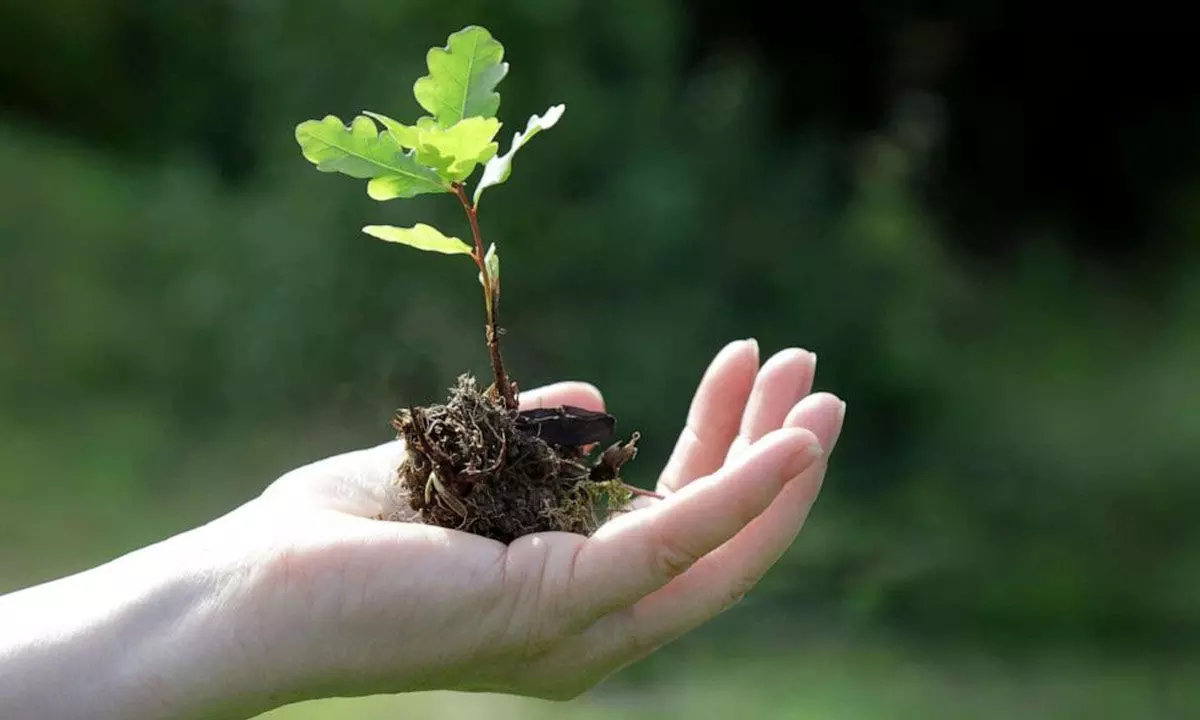Need for fresh look at Vedic knowledge

Representational image
Plants do not suffer in silence. Instead, when thirsty or stressed, plants make “airborne sounds,” according to a study published recently in Cell
Plants do not suffer in silence. Instead, when thirsty or stressed, plants make "airborne sounds," according to a study published recently in Cell. Plants that need water or have recently had their stems cut produce up to roughly 35 sounds per hour, the authors found. But well-hydrated and uncut plants are much quieter, making only about one sound per hour.
This is not the first time that some researchers found plants responding. It was Dr Jagadish Chandra Bose who in 1901 itself at the Royal Society of London in 1901 demonstrated that just like humans, plants too have feelings. He placed a plant in a vessel containing bromide solution, which is poisonous. Using his instrument, he showed on a screen how the plant responded to the poison. One could see rapid to and fro movement on the screen which finally died down. In the present case, it is about the ultrasonic noises that the plants make when subjected to stress. Though we cannot hear those noises, some animals probably can.
Bats, mice and moths could potentially live in a world filled with the sounds of plants, and previous work by the same team has found that plants respond to sounds made by animals, too.
To eavesdrop on plants, LilachHadany at Tel-Aviv University in Israel and her colleagues placed tobacco (Nicotiana tabacum) and tomato (Solanum lycopersicum) plants in small boxes kitted out with microphones. The microphones picked up any noises made by the plants, even if the researchers couldn't hear them. The noises were particularly obvious for plants that were stressed by a lack of water or recent cutting. If the sounds are pitched down and sped up, "it is a bit like popcorn — very short clicks," Hadany says. "It is not singing." These plant sounds have been processed to make them audible to the human ear. Plants do not have vocal cords or lungs. Research won't be stopping here anyway. Hadany says the current theory for how plants make noises centers on their xylem, the tubes that transport water and nutrients from their roots to their stems and leaves. Water in the xylem is held together by surface tension, just like water sucked through a drinking straw. When an air bubble forms or breaks in the xylem, it might make a little popping noise; bubble formation is more likely during drought stress. But the exact mechanism requires further study, Hadany says.
The team produced a machine-learning model to deduce whether a plant had been cut or was water stressed from the sounds it made, with about 70% accuracy. All scientists now agree that plants do respond to stress as they have life in them just like human beings. It won't be out of place to suggest a proper reading of 'Sri Rudram' to understand the nature of life itself. Instead of dismissing it as trash or some 'Brahminical' recitation, it would enlighten us a lot if we explore the true meaning of the Sanskrit verses. This one goes to explain how Rudra resides in all forms of so-called living and non-living on this planet. Only a scientific mind which is open to inquiry can understand it. Our ancient Rishis could master several sciences because of the quality. The present-day scientists are only 'rediscovering' what our history knew and stored in our Vedic knowledge.
















